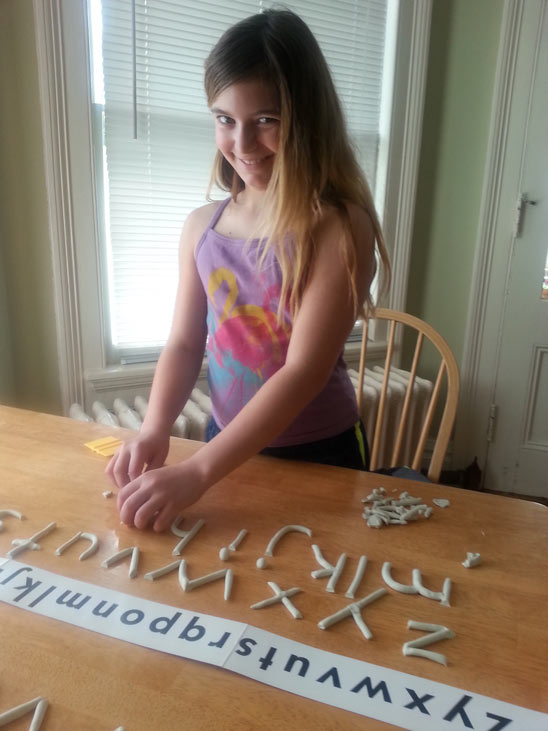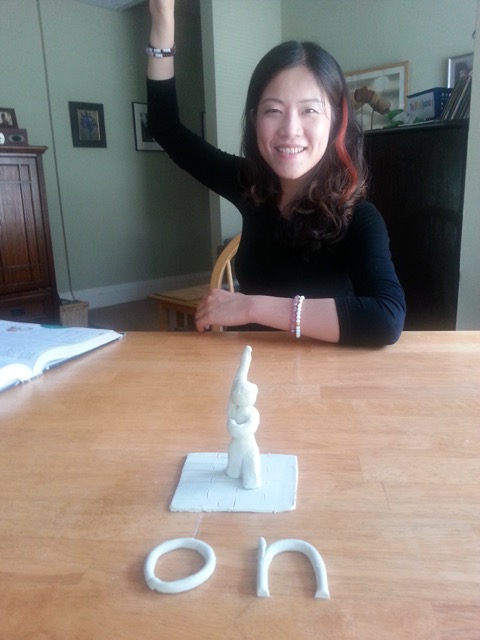Dyslexia is a Creative Thinking Style
The Creative Process and the Learning Process are Inherently Linked…
“The Gift of Dyslexia is the Gift of Mastery” — Ronald D. Davis
Davis Program facilitators use a picture-based, multi-sensory approach
Rather than using traditional, Verbal Learner techniques with Non-Verbal Learners, Davis® Program facilitators use a picture-based, multi-sensory approach that allows students (of any age) to create an effective, long-term strategy and tool-kit for their own learning style.
The fundamental philosophy of the Davis Method is that people with a different way of processing are not disabled learners – they simply have a different thinking/learning style. It’s a creative, gifted thinking style that thrives in a hands-on, experiential learning environment.
Dyslexics are primarily “picture-thinkers,” who need a picture, image, or meaning to process verbal information. Traditional methods don’t teach from a Non-Verbal, meaning-based perspective. There’s emphasis on memorization, and drill and repetition. This is not effective for picture-thinkers. They need to connect with meaning, and the “picture” is the meaning. You can picture an elephant, or airplane; but you can’t picture what “the” means, or “is”, “was”, and “saw.”
What happens is with no picture to process, there is a blank and a feeling of confusion. Enough confusion and the mind will spontaneously disorient to try and resolve the confusion. Disorientation is beneficial viewing 3-d objects and images—you get a better understanding seeing things from different perspectives, but it doesn’t work with 2-d letters and words. It only causes more confusion, frustration, and mistakes. (example: b-d-p-q…was/saw, for/from)
“All the symptoms of dyslexia are symptoms of disorientation” ⏤ Ron Davis.
The first step in our approach is learning a process of “Orientation” to get accurate perceptions and temporarily “turn off” disorientation.
Being oriented makes you feel focused, and ready for any task.
The next step is to master the letters, words (sight words) and any other language symbols that caused the disorientation to begin with. I teach you a method of mastering symbols, words, and/or concepts in clay, so that learning is permanent—no need for drill or repetition.
We use a picture-based, multi-sensory approach, understanding that the creative process and the learning process are nearly one and the same.
Your special mode of thought also allows for the gift of mastery—once you have learned something experientially, you’ve learned it on such a deep level; it’s permanent.




Non-Verbal Learners think mainly in pictures or images
Because dyslexics are primarily picture-thinkers, traditional methods of learning have often fallen short. Teaching a non-verbal, picture-thinker to read, or do math with pencil and paper must take into account “missing pictures” and disorientation.
Disorientation happens spontaneously and subconsciously, and well-intentioned efforts and methods can often make the problem worse.
The Davis Method begins by breaking down that process so the student can actually experience how and when things go awry. And then we build a plan to correct it.
The Davis Program is a comprehensive, progressive approach that involves approximately 30 hours of one-on-one instruction. Students gain an understanding of how their brain works, learn how to create their own pictures for sight words, and learn a set of techniques that re-orient, or focus their attention instantly.
After the program, the client will leave with all the materials needed to continue mastering the sight words with clay, and have a plan that is like a road-map for future learning. They take with them the tools they’ve learned and make them their own.
Davis tools are empowering and often life-changing.
Students gain self-esteem and confidence in their learning abilities. Many adults have felt like they’ve come to understand themselves for the first time. Some say that the shame and frustration they felt for so many years has disappeared, and it’s like they’ve been given the “keys” to a treasure chest that was previously buried.